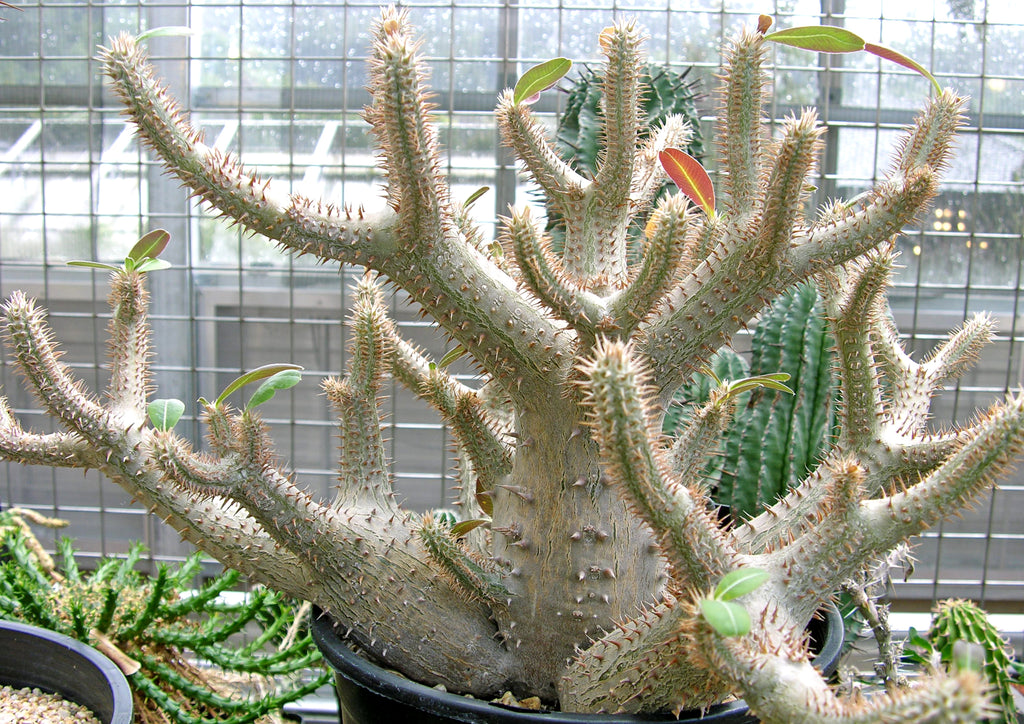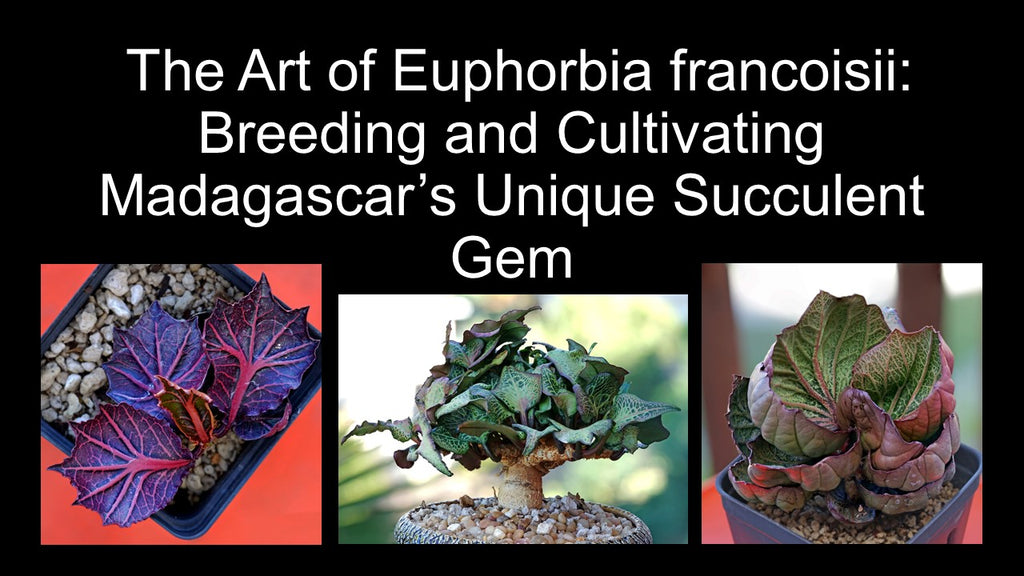George Theodoris

Plump Perfection: Unveiling the Secrets of Succulent Water Storage
Succulents, or 'piante grasse' as they're called in Italian (literally 'fat plants'), have a unique plumpness that sets them apart in the plant kingdom. But what accounts for their 'plump' appearance? It's not fat, as one might find in animals, but rather a specialized water storage tissue known as parenchyma. In the challenging conditions of arid environments, these plants have evolved remarkable adaptations to store precious water, enabling them to thrive where other plants falter. This water-retentive superpower comes from a modification of the standard plant structure, where certain tissues become engorged with water, often altering the plant's shape to...
George Theodoris

The Art of Euphorbia Francoisii: Breeding and Cultivating Madagascar’s Unique Succulent Gem
Slides from a presentation I gave to the British Cactus and Succulent Society (BCSS) on September 5th 2023.
George Theodoris

Stress-free Haworthia coloration: as easy as G x E
Well-bred Haworthia hybrids can have dazzling colors. One of the most captivating features of these plants is the vivid pigmentation decorating their leaves. A prime example is the standout sibling from my PP247 Haworthia hybrid series. This series is a result of a cross between one of my darkest "Scarlet Begonias" F2 hybrids and a carefully chosen PP22 hybrid. Since the turn of the century, I've been dedicated to breeding Haworthia hybrids to enhance their coloration. The intensity and variety of hues in these hybrids have been astonishing. Don’t stress out your plants! I'm sometimes asked if the vibrant colors...
George Theodoris

Succulent Care Series: The Dirt on Soil
In this blog post, I aim to tackle the age-old question of "What is the best soil for succulents?" As an avid succulent grower for nearly 30 years, I have learned a lot through trial and error. However, I want to emphasize that the advice I provide is based solely on my personal experience and may differ from what others suggest. Nonetheless, I hope that the insights I share will be useful to those looking to optimize their succulent-growing practices. Soil is an essential part of a plant’s reality. Soil is a crucial component of a plant's existence. While animals...
Recent Articles